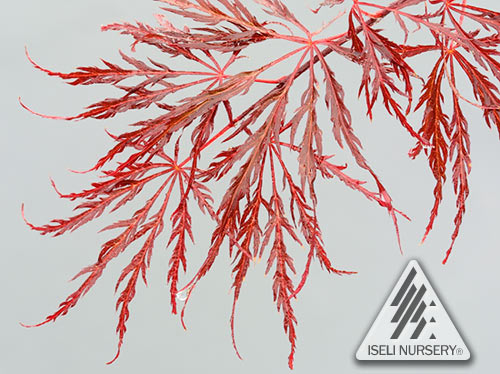| PSC 2620: Woody Trees and Shrub | Course Home | Week 4 |
Acer palmatum - Japanese Maple
Plant Viewer
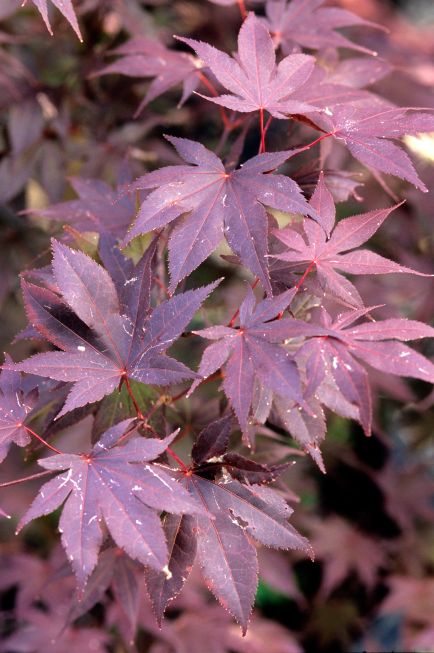 |
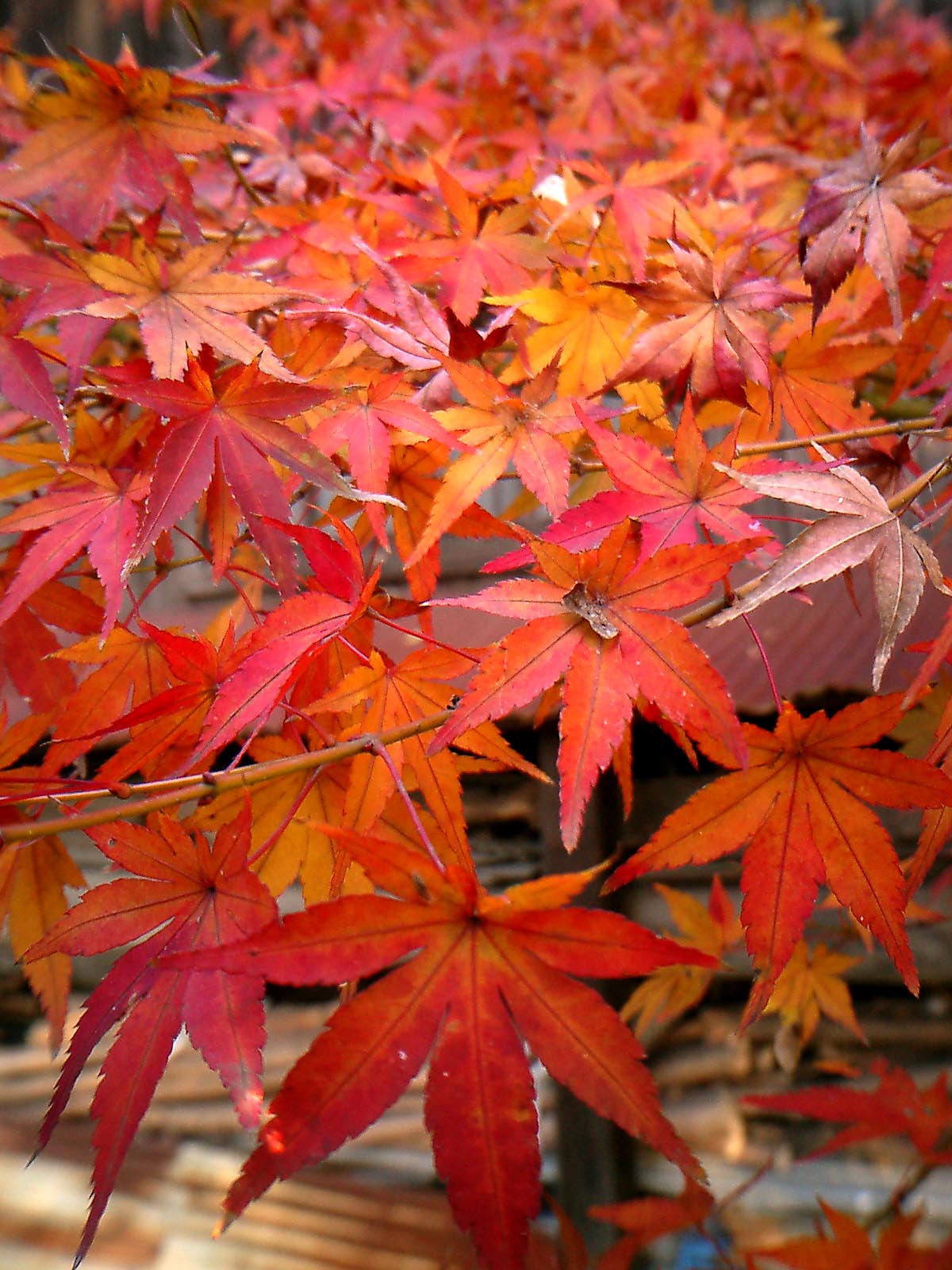 |
| The leaves of the Japanese Maple typically have 5-7 lobes that are deeply cut. The leaf is palmate in shape. | Many varieties of Japanese Maple have very vibrant fall color. Image: Wikipedia.org |
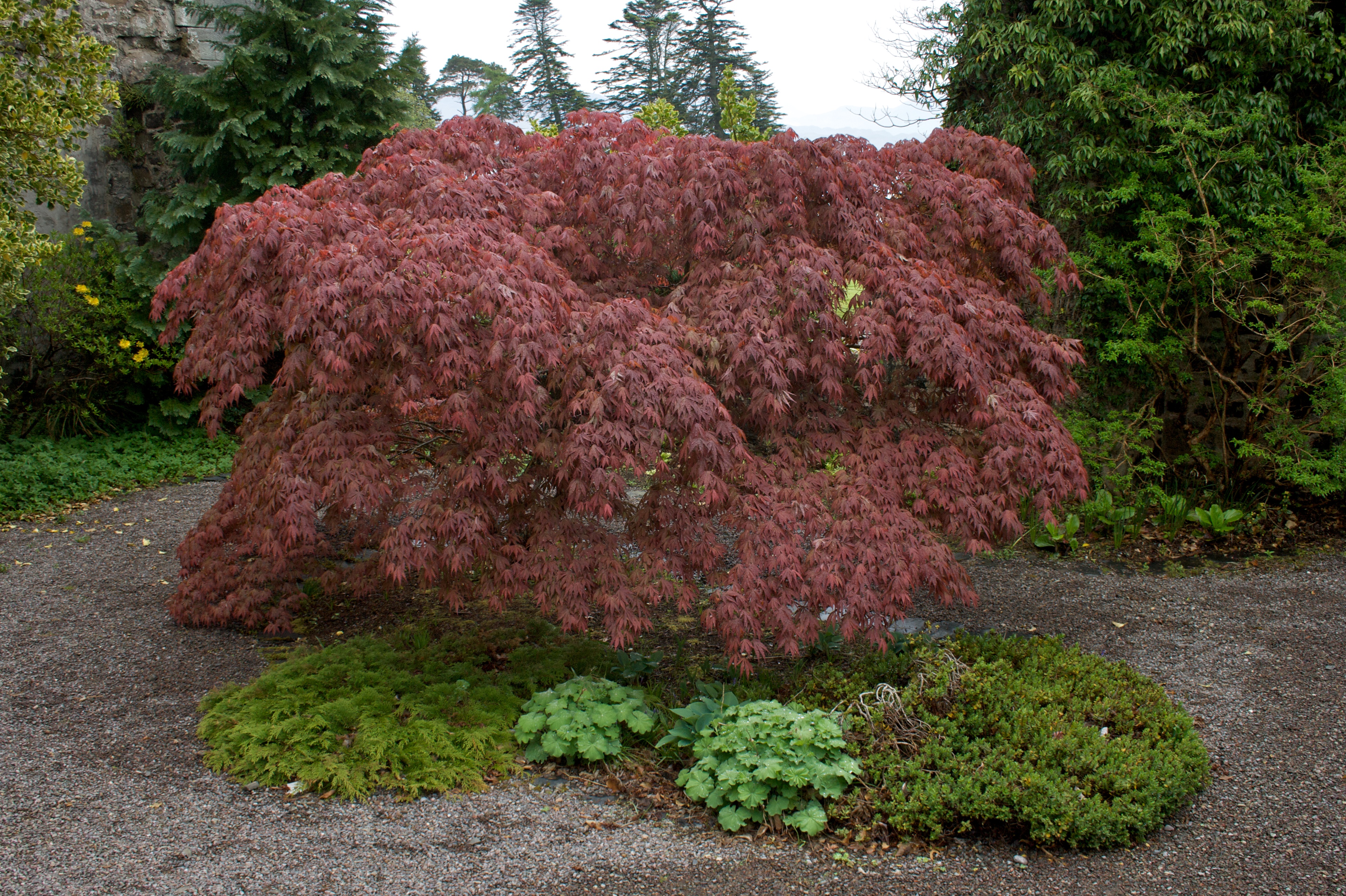 |
|
| It is well known for its attractive form. Mature trees look like delicate and ancient centerpieces in the landscape. Image: Wikipedia.org |
Plant Description
Acer palmatum is a small tree (up to 25 feet tall) with a seemingly endless number of cultivars. Commonly known as Japanese Maple, its varieties are famous for their delicate foliage, good fall color and interesting form. While a borderline species in many parts of the Rocky Mountain region, Japanese Maples are so highly regarded that many homeowners will continue to plant one even after several previous unsuccessful attempts. If planted in the right location and cared for appropriately, Acer palmatum will thrive and provide a wonderful accent plant.
The tree tends to form a broad rounded habit, often being wider than it is tall. This horizontal form is visually reinforced by the vertical layering that naturally appears within the canopy of the tree. It can be found in both a multi-stem or single-stem form. It has a very airy texture, and often feels light in the landscape.
The leaves of Acer palmatum typically have 5-7 deeply-cut lobes, with some having up to 9 lobes. Leaves on any dissectum varieties have leaves so deeply cut that the leaf is spindly and lace-like in appearance. The lobes can vary from being very wide, to very narrow. The margin of the leaf in most cultivars are usually noticeably serrated. The leaf size can vary from 2 to 5 inches long. Red-leafed varieties are the most popular, but green and variegated varieties also exist in significant numbers. The samaras are typically smaller than half an inch an not a noted ornamental feature of the species.
Acer palmatum prefers consistently moist, well-drained soil. Most varieties are slow growing and will need ample water for many years before they well established. While they do not handle extreme cold temperatures well, my experience is that winter wind causes more damage than the temperatures alone.
Landscape Use
Use as a center piece specimen tree. Should be planted in a protected location in colder environments, especially to protect the plant from any winter winds. Many species are suitable for planting in large pots when grown in zone 5 or above.
Points of interest
Be aware that there is a great deal of variety that exists in the cultivars of Acer palmatum in regards to size, form, leaf color and texture.
Notable Cultivars
Bloodgood A large Japanese Maple (20 feet tall) with purple-red foliage that is retained well on the tree. One of the most cold hardy varieties of Acer palmatum, making it an excellent selection for our climate.
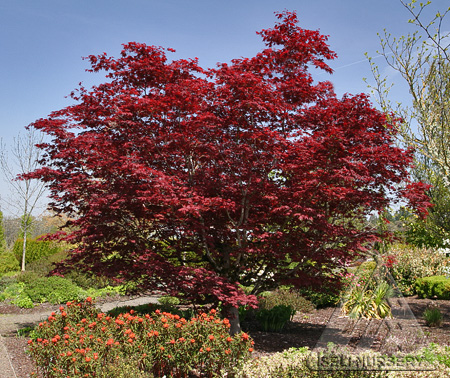
Emperor I A larger Japanese Maple (20-25 feet tall) with vibrant purple-red leaves that are deeply lobed. It grows faster and is more resistant to late frosts and heat damage than Bloodgood.
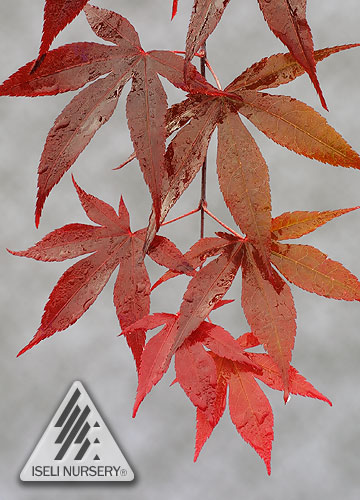
Hogyoku Large, green leaves turn golden orange in the fall. Upright in form, with a moderately fast growth rate.
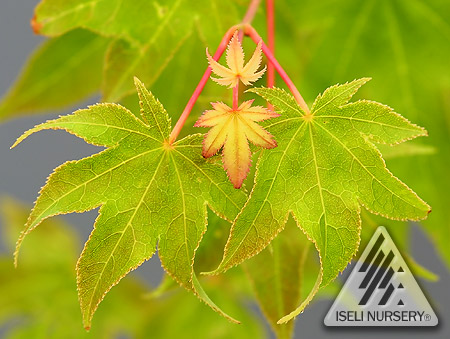
Rhode Island Red A dwarf form with dark red leaves and an excellent round shape.
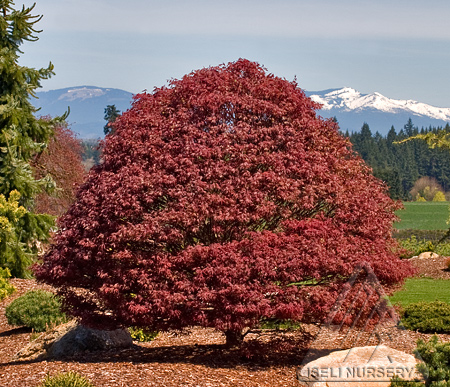
dissectum Crimson Queen This small variety (10 feet tall) has a weeping form with multiple layers, creating a cascading appearance. The leaves are deeply cut and serrate, and very lace-like in appearance. There can be anywhere from 5-11 lobes per leaf.
